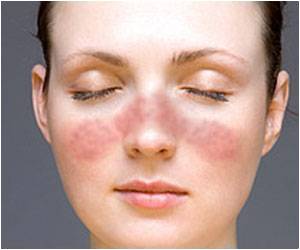Lupus, the chronic and often debilitating autoimmune disease affects Hispanic women, Asian women and white women differently.

‘It is believed that 5 million people throughout the world have a form of lupus. Women comprise 90 percent of lupus patients, with black women affected most disproportionately.’





The project was conducted through the Manhattan Lupus Surveillance Program (MLSP) - a collaboration between NYU Langone Health and New York City's Department of Health and Mental Hygiene (DOHMH) - and supported by funding from the Centers for Disease Control and Prevention (CDC). "Lupus can be difficult to diagnose," says first study author Peter Izmirly, MD, an assistant professor in the Department of Medicine and Division of Rheumatology at NYU Langone and co-principal investigator of the MLSP. "Our findings should make health care providers more aware of the prevalence of lupus in these demographic groups, and hopefully make them consider the diagnosis, especially when patients come in with symptoms that could be consistent with lupus such as arthritis, rashes and signs of kidney disease."
Lupus, or systemic lupus erythematosus, is a chronic disease in which the body's immune system attacks healthy tissues and organs. Symptoms include joint pain and swelling, fatigue, and a butterfly-shaped rash on the cheeks. Public health researchers know that women comprise 90 percent of lupus patients, with black women affected most disproportionately. But, estimates of prevalence and incidence of lupus in the United States vary greatly - and there is presently limited data for certain demographic groups.
Starting in 2004, CDC funded four state and city health departments, as well as the Indian Health Service (IHS), to better identify the incidence and prevalence of lupus. Results from two of these initial sites, the Georgia Lupus Registry and the Michigan Lupus Epidemiology and Surveillance Program, in addition to the IHS, provided estimates for prevalence in blacks, whites, American Indian, and Alaska Native populations.
The MLSP was designed, along with the California Lupus Surveillance Project, to also provide estimates of the incidence and prevalence of lupus specifically among Hispanic and Asian populations, two of the fastest-growing demographic populations in the U.S. The MLSP team reviewed medical records from 2007 through 2009 and estimated how many patients had lupus based on several disease classification criteria from medical organizations, as well as the diagnosis made by the treating rheumatologist.
Advertisement
Dr. Izmirly and his colleagues report that the prevalence rate for Hispanics was 84.6 per 100,000 overall and 142.7 per 100,000 among women. The prevalence rate for Asians was 75.5 per 100,000 overall and 118.5 per 100,000 among women.
Advertisement
These findings, the investigators say, underscore the importance of improving the diagnosis of lupus in these demographic groups.
"While this project highlights the disparities in lupus rates among Hispanic and Asian women, there is more work to do to determine the cause," said senior co-author Hilary Parton, MPH, of the New York City Department of Health and Mental Hygiene and co-principal investigator of the MLSP. "This project will help support future efforts to expand awareness and improve access to care for all people at risk of lupus."
Source-Eurekalert









